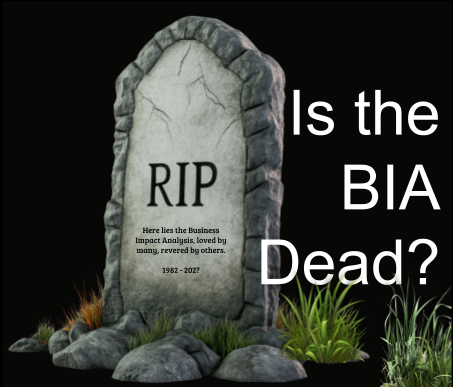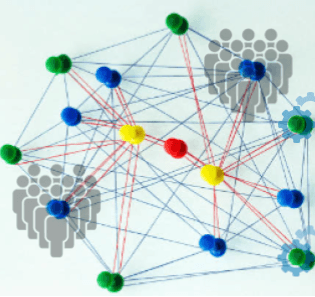Agility and resilience are often thought of as opposites, but the most successful organisations know how to integrate both. Resilience should not come at the expense of a company’s ability to be agile - to respond quickly to new opportunities or shift strategies when needed.
Beware of the Dark Side of Resilience
When Business Continuity Becomes Overkill

Business continuity and resilience are often hailed as essential components of a strong organisation. But we operate in a VUCA world - one defined by volatility, uncertainty, complexity, and ambiguity. In such an environment, having robust plans to keep operations running during disruptions is crucial, but an over-focus on continuity can lead to rigidity, stifling the agility required to navigate these challenges.
There’s a fine line between being prepared and being over-prepared. Sometimes, in the pursuit of resilience, businesses can go too far - becoming overly cautious, rigid, or risk-averse. When this happens, the very systems designed to protect the business can become barriers to agility, growth, and innovation, hampering the workforce and frustrating employees.
Let’s explore the potential pitfalls of over-investing in continuity planning and how businesses can strike the right balance between resilience and agility. [You might also want to check out our previous article on
Business Agility.]
When Business Continuity Becomes a Burden
Business continuity is about ensuring your organisation can recover quickly from disruptions. But when the focus on resilience becomes obsessive, companies can inadvertently create inefficiencies that hinder their ability to adapt and grow.
Some common signs of “overkill” in business continuity planning include:
- Overly Complex Procedures: Businesses may develop intricate and exhaustive continuity plans that cover every possible scenario, no matter how unlikely. While being thorough can be beneficial, overly complex procedures can overwhelm staff and slow down decision-making during a crisis. Instead of reacting swiftly, employees may get bogged down in ticking boxes and following detailed steps that don’t necessarily apply to the situation at hand. Worse, they may abandon the process altogether, missing essential steps and critical actions.
- Excessive Focus on Risk Avoidance: Continuity planning is often built on risk assessments. However, when a business becomes too focused on mitigating every conceivable risk, it can lead to excessive caution. The organisation may begin avoiding opportunities that could involve even a minor level of risk - stifling innovation and growth in the process.
- Redundant Redundancies: Having backups and redundancies in place is a core principle of business continuity. But there’s such a thing as too much redundancy. Duplicating systems, resources, and processes to an extreme degree can result in wasted investments and operational inefficiencies, tying up capital that could be used for growth initiatives.
- Rigid Structures: An obsession with continuity planning can lead to rigid organisational structures, where flexibility is sacrificed for the sake of “stability.” This rigidity makes it difficult for businesses to pivot when needed, trapping them in outdated processes or technologies simply because they’re deemed “resilient.”
The Importance of Agility in Continuity Planning
Agility in business continuity means having plans that are not just robust but also flexible. It’s about preparing for the unexpected while keeping room for innovation and adaptability.
Here’s how to balance resilience with agility:
- Simplify Where Possible: Effective business continuity plans don’t need to be overly complicated. In fact, simplicity often leads to greater clarity and faster decision-making in a crisis. Focus on the core elements that really matter, such as communication protocols*, key recovery objectives, and the most critical systems. By streamlining processes, you make it easier for teams to understand and follow the plan in real-time, without getting caught up in unnecessary detail.
- Embrace Scenario-Based Flexibility: Instead of planning for every possible scenario, businesses can adopt scenario-based planning that leaves room for flexibility. This means designing plans around key types of disruptions but empowering teams to adapt their responses based on real-time conditions. Plans should act as handrails, not handcuffs - providing flexible guidance that encourages innovative thinking and responsibility, rather than limiting responses or allowing reliance on rigid instructions.
- Align Resilience with Innovation: Risk management and innovation should not be seen as competing priorities. By fostering a culture that encourages calculated risks, businesses can embrace innovation without undermining their resilience. Continuity planning should not restrict business growth initiatives. For example, adopting new technologies or entering new markets might carry some risk. Identifying and managing risks with an innovative approach can lead to the development of unique intellectual property, which in turn becomes a differentiator and competitive advantage. Netflix's Chaos Monkey* tool exemplifies this, enabling the company to enhance agility while significantly reducing disruptions.
- Leverage Technology for Flexibility: Modern technology can help make continuity plans both resilient and agile. Cloud-based solutions, for example, offer flexibility by allowing employees to access critical systems and data from anywhere. Automated systems can ensure rapid recovery from disruptions without needing extensive manual intervention. By investing in adaptable technologies, businesses can increase both their resilience and their ability to pivot when necessary.
- Train for Agility: Employees play a critical role in maintaining both resilience and agility. Training shouldn’t just focus on following procedures but also on fostering quick decision-making and problem-solving skills. Regular simulations should include dynamic scenarios where teams need to adapt at pace, helping them become more comfortable with ambiguity and change.
Balancing Continuity and Growth
Ultimately, resilience is essential - but not at the expense of growth and adaptability. A strong business continuity plan should act as a foundation for agility, enabling businesses to recover from disruptions while remaining nimble in the face of change.
Striking this balance requires a mindset shift. Rather than seeing resilience and agility as separate goals, companies need to view them as complementary forces. Agility should be built into continuity planning, ensuring that when disruptions occur, the business can not only survive but thrive in the aftermath.
By taking a more balanced approach - one that focuses on both continuity and adaptability - organisations can ensure they are not just protecting themselves from risks but also positioning themselves to seize new opportunities and grow in an ever-changing world.
Want to learn more? Get in touch.
Footnotes:
1 Communication protocols refer to the structured methods and channels used to convey essential information during a disruption, ensuring that critical stakeholders, both internal and external, receive timely updates. This includes emergency notifications, internal briefings, media statements and coordination with external entities like emergency services. These examples are not exhaustive and can vary based on the organisation’s specific needs.
2 Chaos Monkey, developed by Netflix in 2010 is a tool that intentionally introduces disruptions to a system to test its resiliency and identify vulnerabilities.
Why not check out our free
VFS Resources Hub for more content.












